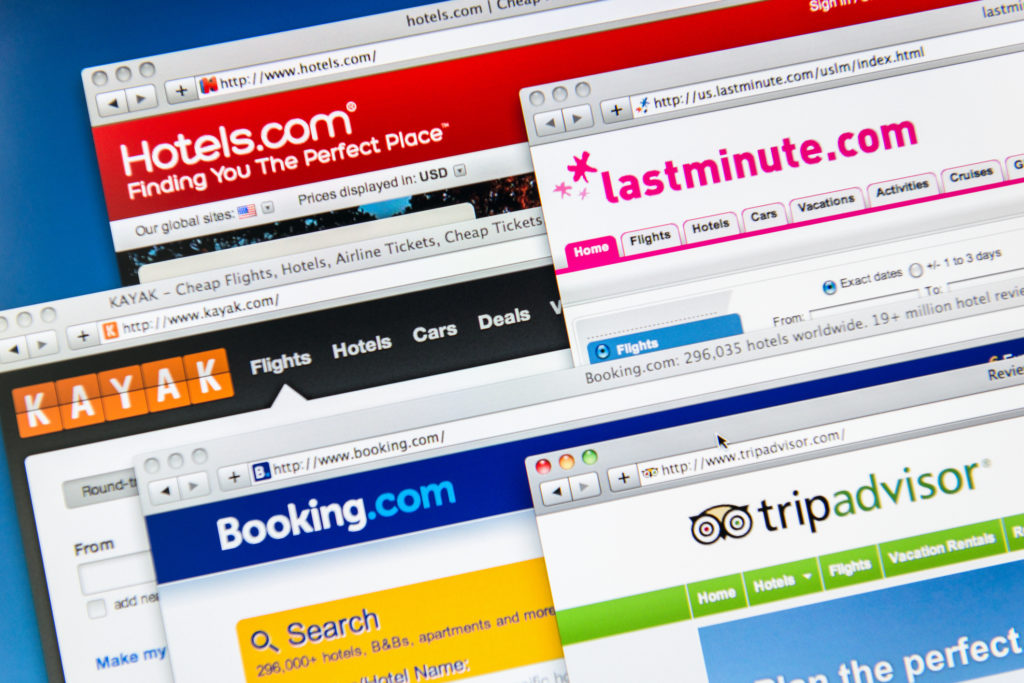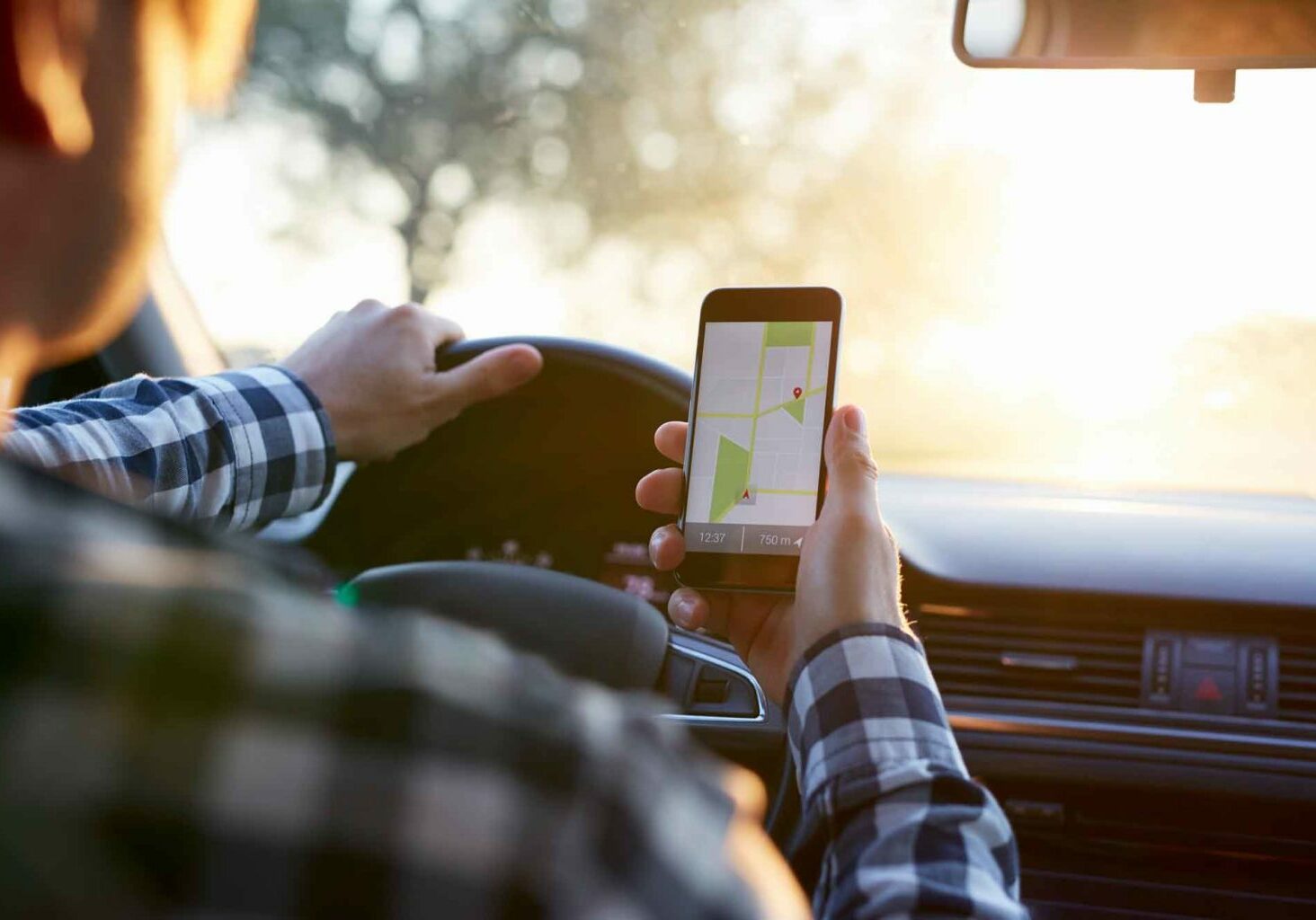Last Updated on June 24, 2021 by
Let’s face it: if you want to talk about your winery’s digital marketing, you have to discuss cell phone use. After all, half of U.S. internet traffic comes from smartphones, with local business searches increasing at rapid rates.
When your potential customers want to find your winery, most won’t look you up in a phone book. Instead, they’ll pull out their smartphone and Google it. When they take that step, what will they find?
The answer to that question is at the heart of this article. For wineries, location-based marketing remains absolutely crucial, and that type of marketing now focuses mainly around mobile devices. Through these four steps, you can make sure your customers (and their phone) will find your winery on a map.
1) Optimize Your Google My Business Profile
The first and most comprehensive piece of location-based marketing is your Google My Business profile. Through this profile, Google pulls in your business information to both searches and maps. If you don’t optimize it, that process happens automatically. Claiming it and making sure it’s accurate is hugely important.
Google My Business both provides your winery with a prominent placement on branded search results, while also elevating your overall search engine optimization strategy. Optimizing it requires a few components:
- Claim or create your listing. That will include verifying it directly with Google, to make sure you underwrite the fact it is a credible business. You can verify it using phone, email, or postcard.
- Optimize your business listing. Your phone number, physical address, and business name be both accurate within Google and consistent with your website. Add your business hours and a short description, too.
- Add your category. This piece plays a significant role in your SEO. You can add multiple categories; winery, wine club, wine cellar, and wine store might all be relevant options for you. Make your primary business function the primary category.
- Add your business URL and sub URLs. For instance, you can add a web link specifically to your wine events or the different types of wines you sell.
- Add attributes as appropriate. In the Attributes section, you can add pieces like ‘women owned’, ‘wheelchair accessible’, ‘outdoor seating’, and more.
- Add photos, videos, and a virtual tour if you have it. This adds to the visual presentation visitors see when they Google the name of your business.
- Respond to reviews. Acknowledge positive reviews, and make an honest effort to help negative reviews resolve their issue or at least apologize. A good Google My Business presence is at least part reputation management.
2) Establish Your Yelp Listing
Yelp is one of the most trusted sources for anyone looking for an establishment to visit, with more than 35 million mobile app users every month. As with Google My Business, you can take a few steps to make sure your listing is both accurate, attractive, and makes it more likely for your audience to find and visit your winery:
- Claim your Yelp listing (or create a new one) to gain control over it.
- Add content. The more comprehensive your listing, the better. That includes all of your basic business information and a description, but also photos that show what your winery looks like.
- Engage with reviews. They help you better understand your audience, as well as your winery’s strong and weak points. But they also enable you to engage in effective reputation management.
- Focus on keywords. Most users use Yelp like a search engine, browsing for a spot to visit in a given evening. Make sure your listing includes the types of keywords they might be looking for.
- Keep your listing updated. Check back in regularly to make sure all information is still up-to-date, and you continue to respond to reviews as they flow in from those who have already found you.

3) Manage Your TripAdvisor Listing
TripAdvisor actually has a helpful internal tutorial that walks you through a number of steps you can take to optimize your listing. Like Yelp, it acts as a trusted independent source for an audience thirsty for adventure or just a fine night out in wine country. Some steps the platform encourages users to take include:
- Confirming and editing your winery’s basic information by registering as an owner. Make sure all basic information on the listing is correct.
- Uploading photos that showcase your winery. According to TripAdvisor, businesses with 30 or more photos on their profile receive 42% more engagement than those with 10 photos or fewer.
- Updating your address and verifying your flag pin’s location. That ensures your winery will appear on the map potential visitors refer to when they plan their trip and look for attraction.
- Encourage and engage with reviews. Number of reviews and average ratings are both crucial ranking factors for TripAdvisor. Encourage users who have a positive experience at your winery to say so.
- Showcase your listing, both within your winery and on your website. That doesn’t get more visitors through the door, but helps you get those positive reviews and improve your ranking.
4) Leverage Local Search Ads
Finally, if a prominent and effective placement on these three major platform isn’t enough, consider paid local advertising. Search ads become an especially relevant and attractive option here.
The concept is simple. When users search for nearby attractions and businesses on either Google or Google Maps on your phone, your winery will appear as an ad with a specific call-out to exactly where you’re located. From within Google Maps, users can ask for directions or just call your winery for more information.
That strategy works. According to one study, local search ads receive almost 15 percent of all clicks on a search engine results page. So many searches are local that paying to feature your winery’s physical location on relevant keywords might just be the key to more members of your audience discovering and visiting your location.
Are You Ready to Elevate Your Mobile Winery Marketing?
Mobile and local marketing go hand-in-hand. Combined, they can become a powerful tool in helping your audience not just find your physical location, but use that knowledge (and the accompanying promotional content) to visit and become customers.
Of course, you need the right strategy and messaging. It’s also difficult to have the time to keep all of your local and map-based listings updated while managing a comprehensive local search ad campaign. Fortunately, you don’t have to be alone in that process.
Our expertise in winery marketing extends to local and location-based searches. Contact us to start a conversation about how to elevate your mobile and local winery marketing.
